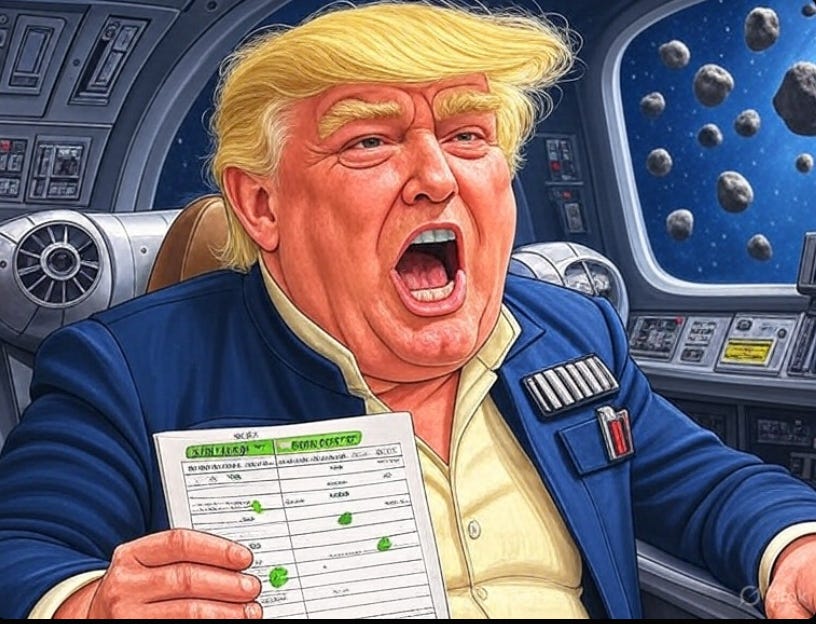Re: Macro/Geopolitics-Where Are We In The Asteroid Field?
How is Trump 2.0 navigating the treacherous Asteroid Field? It's time for a report card.
Back in March, I wrote a detailed missive about how I saw the Trump 2.0 Policy Playbook shaping up:
To revisit the Star Wars analogy:
Trump 2.0 is piloting the Millennium Falcon (the US Economy and Credibility) through an Asteroid Field of difficult policy choices.
Keep reading with a 7-day free trial
Subscribe to Kaoboy Musings to keep reading this post and get 7 days of free access to the full post archives.



